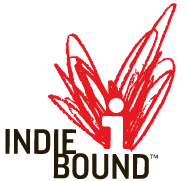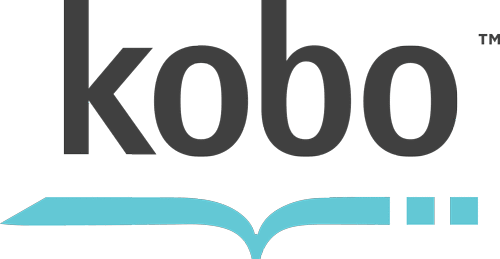Dan Pontefract's Blog, page 30
May 3, 2016
Cool Contest: Win 1 of 10 Free Copies of The Purpose Effect
Hi there,
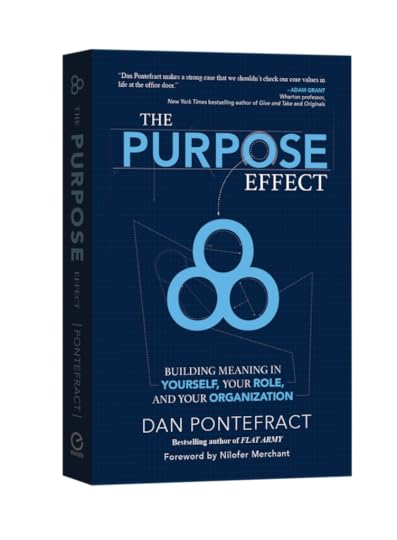 Over at Goodreads, my fabulous publisher, Elevate Publishing, is giving away fifteen free copies of my next book, The Purpose Effect.
Over at Goodreads, my fabulous publisher, Elevate Publishing, is giving away fifteen free copies of my next book, The Purpose Effect.
The only thing you have to do is click a button to enter. Simple. Easy. (at least click by May 11)
But over here at the worldwide headquarters of ‘dp‘ … I’m giving away 10 signed copies of the book with a little wrinkle. There’s a twist. Are you ready?
Ever since publishing my first book, Flat Army, I’ve become possessed by the concept of purpose. What I have realized (as you will hopefully read in the book) is that there are three categories of purpose: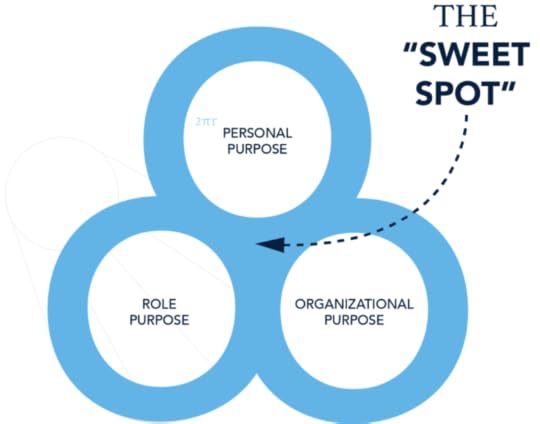
Personal
Organizational
Role
This handy diagram might help. (after all, it is the basis of the book)
But, what I also discovered through my research, thinking, interviewing and writing … is that it all starts with you. It starts with personal purpose.
In order to gain entry to the contest (to win a free/signed book), I’m asking that you share your “personal declaration of purpose” statement in the comment field below.
Don’t have one?
That’s ok. There is no time like the present to think about a one or two-line sentence that describes how you choose to operate your life. This is your “personal declaration of purpose.”
Mine?
We’re not here to see through each other; we’re here to see each other through.
As I am an educator, I’d also like to ask our three goats (the children) to help in the final judging of the ten best purpose statements. That way, I can help them see the importance of such a statement and such an action to take in life. (And don’t worry, these statements can change over time – there is no perfect one, or perfect answer.)
Deadline: May 8, 2016 6:00pm Pacific Timezone
I will announce the winners on May 9 in this space.
My many thanks in advance for sharing. I look forward to reading your submissions.
Cheers
dp
PS. Need some inspiration? You can watch my TED Talk on the topic of purpose.
Dan's Related Posts:Free Download of Chapter 1 – The Purpose Effect Why I Wrote “The Purpose Effect” BookLo-Tech Talk #1: Introduction to Personal PurposeMy TEDx Talk on The Purpose EffectThe Electrocardiogram of Purpose
May 2, 2016
When Death Stares At You, Hinting Your Career Was A Scam
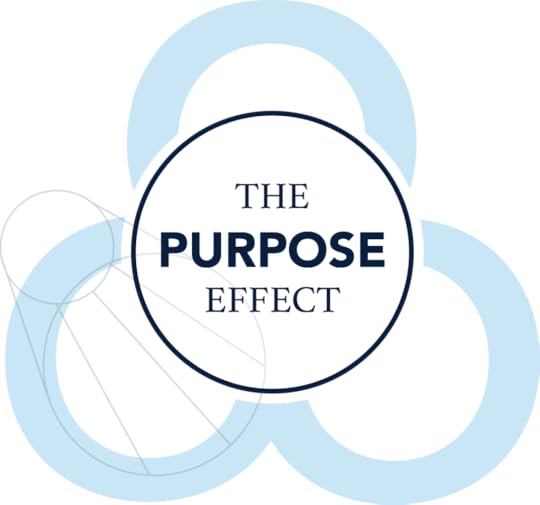 In October of 2012, at the age of 52 years, Linds Redding of Auckland, New Zealand died of inoperable esophageal cancer. Prior to his battle, he was the owner and operator of a small animation and art studio called The Department of Motion Graphics.
In October of 2012, at the age of 52 years, Linds Redding of Auckland, New Zealand died of inoperable esophageal cancer. Prior to his battle, he was the owner and operator of a small animation and art studio called The Department of Motion Graphics.
The firm specialized in “designing and crafting unique, high quality motion graphics and animation solutions.” Prior to starting the business, Linds worked at large advertising agencies such as BBDO and Saatchi & Saatchi as an art director. His entire 30-year career had been spent serving the advertising industry in one way or another.
In March of 2012—taking stock of his life, career and the inevitability of his own death—Linds wrote a 3,000-word essay on his blog entitled, “A Short Lesson In Perspective.” He started by focusing on what he referred to as “The Overnight Test.” When working on an advertising project, he and his colleagues would spend hours coming up with ideas, pinning each of them to a board for viewing. The next day—and not at the moment of ideation—the team would decide which options to put forward to a client.
In his post, Linds lamented the modern corporation’s quest for profit maximization and regretted that the patience required by “The Overnight Test” was rarely to be witnessed at such organizations. “The Overnight Test only works if you can afford to wait overnight,” wrote Linds.
But his essay went deeper. The chilling, reflective feedback did not solely focus on the profit-only mindset of the corporation. He set his sights on the people who do the work in the organizations, too—including himself.
“My old life looks, and feels, very different from the outside. It turns out I didn’t actually like my old life nearly as much as I thought I did.”
Linds was dying. Perhaps it was this state of contemplativeness that urged him to write about his career. It was a career he was not all that happy with. “I think, I’ve come to the conclusion that the whole thing was a bit of a con. A scam. An elaborate hoax,” he opines. Linds believed his entire education and experience actually set himself up for an “epic act of self-deceit.”
“Countless late nights and weekends, holidays, birthdays, school recitals and anniversary dinners were willingly sacrificed at the altar of some intangible but infinitely worthy higher cause,” he recounted. “It would all be worth it in the long run.”
But this myopia and fixation on the role, his performance and the rigidity that accompanied his behavior was like a career Ponzi scheme. He had convinced himself that sacrificing time from his life to work for the glory of his career and firms was dutiful. It was necessary. In hindsight, Linds believed, “It wasn’t really important. Or of any consequence at all really. How could it be? We were just shifting product.”
Toward the conclusion of the essay, Linds asks, “So was it worth it?” His answer cut to the heart of the matter.
“Well, of course not. It turns out it was just advertising. There was no higher calling.”
Eventually, Linds wonders if his 30-year professional existence was a sham. He closes the post by writing, “As a life, it all seemed like such a good idea at the time. I’m not really sure passes The Overnight Test.”
The story of Linds Redding ought to be a wake-up call for both individuals and the organization. Individuals who believe their purpose in life is solely tied to their role at work may be in for a rude awakening when a life event or organizational downsizing incident occurs.
Our roles and careers are important, but they should not be considered the sole identifying factors that define us. When an organization creates an operating culture rife with power, a lack of caring or unethical behaviors, it becomes an accomplice in disengagement. The organization becomes a contributing factor in the creation of unfulfilled lives.
No one deserves to die feeling their work was a sham. That is, the organization can be thought of as partially culpable for scenarios like that of Linds Redding.
THE PURPOSE EFFECT: Building Meaning in Yourself, Your Role and Your Organization” – order it here>
Dan's Related Posts:Book Excerpt: The Purpose EffectAlarming Trends in CIPD Employee Outlook SurveyPurpose: The Word of 2016Sheri Quit Her Job And Regained Her Purpose Sweet SpotFree Download of Chapter 1 – The Purpose Effect
April 30, 2016
Lo-Tech Talk #3: Organizational Purpose
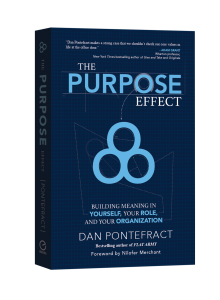 This “lo-tech talk” is aimed at those who seek to create an organization that serves all stakeholders.
This “lo-tech talk” is aimed at those who seek to create an organization that serves all stakeholders.
In the video, I discuss the “Good DEEDS”, a 5-stage model that can help organizations create a higher sense of purpose in its mission and actions.
I argue that the purpose of an organization ought to be to “provide service to benefit all intended stakeholders.” With a workforce that has discovered a sense of purpose in life—complimented by purpose in their role at work—the sweet spot for the organization can be achieved if the Good DEEDS concept is implemented.
Examples and strategies to bring Organizational Purpose to fruition are found in detail in my new book, THE PURPOSE EFFECT.
The video is 5:38 in length.
Dan's Related Posts:Lo-Tech Talk #2: The Leaders Guide to The Purpose EffectFree Download of Chapter 1 – The Purpose Effect Lo-Tech Talk #1: Introduction to Personal PurposeMy TEDx Talk on The Purpose EffectThe Electrocardiogram of Purpose
April 29, 2016
Book Excerpt: The Purpose Effect
Famed advertising mogul, George Lois, once said, “Most people work at keeping their job, rather than doing a good job. If you’re the former, you’re leading a meaningless life. If you’re the latter, keep up the good work.” To pay the bills, most of us have to work. The question we might pose, however, is whether work is merely a job or, with it, the possibility of a meaningful experience. Depending on your situation, work is either loved, liked, tolerated, loathed or treated with ambivalence. For certain, though, it is a guaranteed topic of discussion at any social gathering you attend. When attending any kind of dinner party, for example, how many times have you asked or have been asked the question, “So, how is work?”
Management expert Peter Drucker once said of the link between life and work:
“To make a living is no longer enough. Work also has to make a life.”
When work can in fact make a life, we know we are resting confidently in the sweet spot between personal, organizational and role purpose. But for a large portion of today’s team members, work seems to act as a stressor, the consequence of not finding one’s purpose in their role. Perhaps disengagement of team members stems from a lack of purpose in the organization itself.
I asked several people for their definition of work. Some interesting examples surfaced:
Best thing in the world if you can’t wait for the weekend to finish. Worst thing in the world if you say, “I don’t like Mondays.”
SAP Global Operations Director, John McNaughton, UK
Engaging tasks that provide returns, such as monetary compensation, personal growth and meaning.
99TestsFounder & CEO, Praveen Singh, India
A purpose-driven series of mental and physical activities during which the collective learns and shares their learning with others.
Founder, IndaloGenesis, Richard Martin, UK
Minds collaborating for the same purposeful result.
Harry Krantz Co. LLC Purchasing Manager, Debra Criveau, USA
To achieve something of substance.
OspreyData Co-Founder, Andrew Marks, USA
It is evident from such responses that the concepts of meaning, purpose, achieving, engaging and collaborating comprise the patches for an intriguing quilt of definitions. What does your own quilt say about work? What does your definition of work say about you? Do you define work — both the place you are employed and the profession that makes up your trade — with words like flourishing, meaning, well-being, balance, community, giver and purposeful? Are you viewed as someone who cares about the purpose of the organization? Does your organization bring purpose and meaning to all stakeholders in its operating mandate and mission?
Or, perhaps, you think of work as a quest to climb the career ladder, judging success by the improvement of your title, remuneration level and the number of direct reports you are in charge of. Is work the quest to assume greater power? As American journalist Robert Quillen once wrote, “By working faithfully eight hours a day you may eventually get to be boss and work twelve hours a day.” Is your purpose solely to become the boss?
Maybe you view work merely as a paycheck; a means to an end. Maybe work is solely a job leading to a state of individualism. In 1831, French historian Alexis de Tocqueville referred to this state as, “A calm and considered feeling which disposes each citizen to isolate himself from the mass of his fellows and withdraw into the circle of family and friends; with this little society formed to his taste, he gladly leaves the greater society to look after itself.” If the organization’s purpose creates isolation, loneliness or a sense of individualism, will a team member ever achieve purpose in their role? What about in their life?
Perhaps work is the fixation on profit. If you are a private company, profit is important and necessary. Without profit there is no business. But the question a company needs to ask itself is whether or not it is solely focused on profit (or shareholder return, in some cases) rather than serving the interests of all stakeholders. Recall Fairphone’s example: as a private company, it seeks to make a profit but not at the expense of its overarching purpose.
If you are working in a not-for-profit or public sector organization, are you operating in harmony with the board, regulators or fellow team members? Take for instance the United States Government. Each year, the United States Office of Personnel Management aggregates employee engagement results from over 48,000 offices, across 82 federal agencies. In 2014, almost 400,000 workers participated in what is known as the Federal Employee Viewpoint Survey, or FEVS.
Since 2010, job satisfaction is down eight percentage points to 64 percent. With almost three million workers in government, that’s roughly one million people who are unsatisfied in their roles at work. Other data points demonstrate continued “wear and tear” on engagement levels of employees. Only 52 percent of workers, for example, believe their management does an effective job at encouraging communication and collaboration. That correlates to only 55 percent of all U.S. government employees being satisfied with the organization they work for itself.
Judging from global employee engagement surveys — where levels of internal employee engagement continue to remain anemic — well over three-quarters of those employed on the planet do not find meaning in their work. Some of this blame falls squarely on the individual, for certain, but organizations devoid of true purpose and senior leaders fixated on power or profit do nothing to help the current plight of the purpose of work.
At its root, work is a means by which we get paid to partially satisfy what Abraham Maslow defined in 1960 as the Hierarchy of Needs. In particular, when we are paid for performing at work, we can utilize the funds we are remunerated with to satisfy such physiological and safety needs. It can also include personal requirements such as financial, economics, property, goods, food, drink, well-being and health.
But the workplace is not solely a place to be paid, is it? Some argue that team members merely rent their skills to an organization in return for compensation. Might the other three components of Maslow’s thesis (belongingness, esteem and self-actualization) be incorporated into the way work ought to be conducted? Perhaps this is when a team member reaches the sweet spot. Perhaps “purpose at work” occurs at a state of what we may refer to as workplace actualization.
If work is to make a life, as Peter Drucker suggested, the purpose of the organization might need to shift to include a greater degree of meaning. If this occurs, perhaps more team members will be able to feel a sense of purpose in their roles as well. If this occurs, I would like to argue that work can also then make a life. Perhaps at this point there may be a link between self-actualization and workplace actualization.
Is this the purpose to purpose?
Want more? Download the entire Chapter 1 for free (PDF)
 ______________
______________
Dan Pontefract’s next book, THE PURPOSE EFFECT: Building Meaning in Yourself, Your Role and Your Organization, will publish May 10, 2016. He is Chief Envisioner of TELUS Transformation Office. Pre-order here.
Dan's Related Posts:Defining A Leader’s Duty Of CareMy TEDx Talk on The Purpose EffectPurpose: The Word of 2016Sheri Quit Her Job And Regained Her Purpose Sweet SpotFree Download of Chapter 1 – The Purpose Effect
April 27, 2016
Lo-Tech Talk #2: The Leaders Guide to The Purpose Effect
 As we all know, roles are created by the organization to achieve its mission and goals. Roles make up the whole of the organization. If there are no roles, there is no organization.
As we all know, roles are created by the organization to achieve its mission and goals. Roles make up the whole of the organization. If there are no roles, there is no organization.
Roles can come and go due to factors such as contraction, expansion or the introduction of new technologies like automation or artificial intelligence.
Regardless, when an individual is performing in their role at work for the organization and themselves, one of three different mindsets will likely be exhibited.
For leaders of people, the concept of “role purpose” is critically important to understand. The three types of role purpose mindsets are key to helping employees achieve both personal and role purpose.
This “lo-tech” video (found below) helps to explain the basic concept of ‘role purpose’ … something I describe in detail in my new book, THE PURPOSE EFFECT.
It’s an introductory video (4:38 in length) aimed at leaders of people.
Dan's Related Posts:Lo-Tech Talk #1: Introduction to Personal PurposeThe Electrocardiogram of PurposeMy TEDx Talk on The Purpose EffectFree Download of Chapter 1 – The Purpose Effect Defining A Leader’s Duty Of Care
April 26, 2016
Why I Wrote “The Purpose Effect” Book
 A question I am being asked more and more is why did I decide to write another book, this one focused on purpose?
A question I am being asked more and more is why did I decide to write another book, this one focused on purpose?
Other than being a masochist, there is a very good reason.
I wrote THE PURPOSE EFFECT to prove that there is a link between purpose and culture.
While my first book, FLAT ARMY, focused on organizational culture, I figured out after publishing it there was something missing.
The concept of purpose was something I wanted to explore deeply, and prove that an organization and its employees are better off with the dynamic duo of culture + purpose.
You could say that THE PURPOSE EFFECT is the sequel to FLAT ARMY.
Through the three years of writing THE PURPOSE EFFECT, I have discovered and proved my thesis that purpose is a very close partner of culture.
If the purpose of the organization and its team members is aligned—and the organization is operating in an open, collaborative and harmonious culture—it delivers the one-two punch of societal and organizational benefits. THE PURPOSE EFFECT is, therefore, not only a sequel but a companion to FLAT ARMY. It connects the dots between purpose and culture, and it solidifies the outcomes of an engaged organization, improving personal and organizational results.
 In parallel, Denise (my infinitely better half) and I have three children (we call goats), now aged 13-, 10- and 9-years old. There is not a day that goes by where I am not thinking about the goats and their future.
In parallel, Denise (my infinitely better half) and I have three children (we call goats), now aged 13-, 10- and 9-years old. There is not a day that goes by where I am not thinking about the goats and their future.
I want nothing more for them than to either start an organization or work in an organization that spills over with purpose. As a parent, I hope THE PURPOSE EFFECT is being demonstrated in our household (by Denise and I) and in the organization where we have chosen to work. I hope our goats look up to both of us as role models of purpose.
I even dedicated the book to them. You can watch this short video below to see their reaction when they found out.
Dan's Related Posts:The Electrocardiogram of PurposeLo-Tech Talk #1: Introduction to Personal PurposeMy TEDx Talk on The Purpose EffectThe Purpose Effect Book EndorsersFree Download of Chapter 1 – The Purpose Effect
April 25, 2016
The Purpose Effect Book Endorsers
If you are curious to know the entire list of early endorsers for THE PURPOSE EFFECT, this graphic outlines all 26 people. I feel lucky and honoured for their belief in the book.
Find out what they actually wrote by visiting the site.
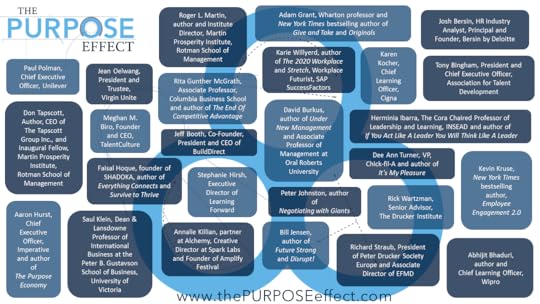
Dan's Related Posts:The Electrocardiogram of PurposeFree Download of Chapter 1 – The Purpose Effect Lo-Tech Talk #1: Introduction to Personal PurposeFull Book Jacket Cover Released for The Purpose EffectMy TEDx Talk on The Purpose Effect
Lo-Tech Talk #1: Introduction to Personal Purpose
Aimed at individual employees, author Dan Pontefract takes a “lo-tech” video approach to explain the basic concept of ‘personal purpose’ found in his book, THE PURPOSE EFFECT. It’s an introductory video aimed at people who want to understand the importance of personal purpose.
Order the book below:
Dan's Related Posts:The Electrocardiogram of PurposeMy TEDx Talk on The Purpose EffectFree Download of Chapter 1 – The Purpose Effect Full Book Jacket Cover Released for The Purpose EffectPerhaps the Purpose of an Organization?
April 21, 2016
Purple Reign
Look in amazement at the stars,
Hug with tenderness a loved one,
Smell the purple in lavender,
Listen to that ocean rage,
Taste the succulence of humble pie.
For it is an inevitability, death.

Dan's Related Posts:Clowning Around – An Important Leadership AttributeA Twitter Conversation With Myself About Culture and CetaceansSteve Jobs – My Favourite BeatlePlease Don’t Let There Be Anonymity After DeathFor Don …
April 16, 2016
The Electrocardiogram of Purpose
I find metaphors and pictures often help to explain a concept. In this case, The Electrocardiogram of Purpose is both.
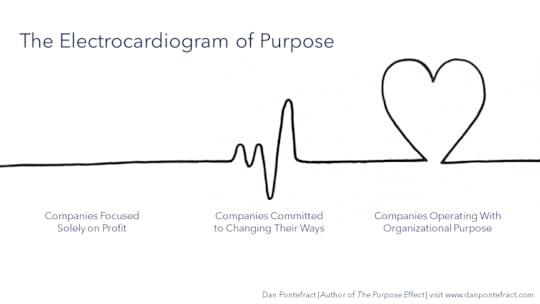
You can order my book, “THE PURPOSE EFFECT: Building Meaning in Yourself, Your Role and Your Organization by clicking here.
Dan's Related Posts:Full Book Jacket Cover Released for The Purpose EffectMy TEDx Talk on The Purpose EffectA 72,000 Word CloudFree Download of Chapter 1 – The Purpose Effect Perhaps the Purpose of an Organization?


